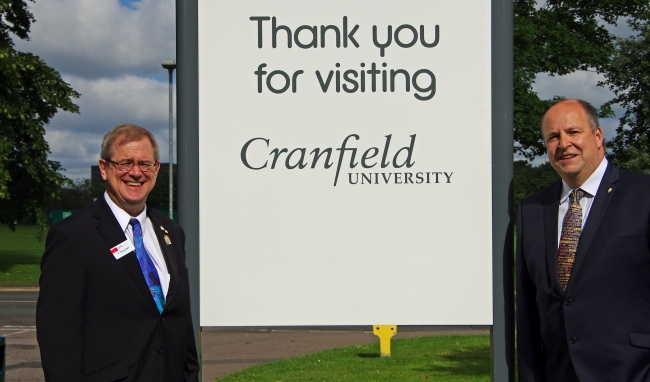previous next
Group Photo
November 2014
A group photo taken sometime around 2014 when a photographer came to visit the group and take some pictures in the labs.
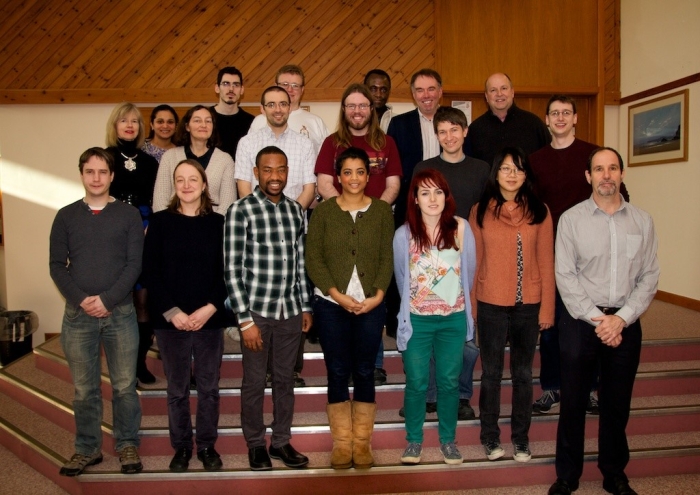
Top row (L-R): Divya Tiwari, Vangelis Rigas, Mark Manders, Edmond Chehura, Steve James, Ralph Tatam. Middle row (L-R): Liz Lourenz, Helen Ford, Tom Charrett, Nick Davies, Thomas Kissinger, Matthew Partridge. Front row (L-R): Dan Francis, Jane Hodgkinson, Elijah Uche, Sahar Chowdhury, Sarah Bergin, Rebecca Wong, Steve Staines.
Visit to Palacký University in Olomouc, Czech Rep. – Speckle instrumentation
5th October 2014
As part of our work in the development of laser speckle instrumentation, Dr Tom Charrett recently visited, Palacký University in Olomouc in the Czech Republic to present a lecture on the work of Engineering Photonics at Cranfield and to discuss potential future collaborations in the area of laser speckle instrumentation.
The visit was partially funded by an Engineering and Physical Sciences Research Council UK, platform grant, EP/H02252X. Accommodation and subsistence in the Czech Republic was provided by Palacký University under a RCPTM-NET (Integration of Regional Centre of Advanced Technologies and Materials into International Networks of Nanotechnological and Optical Research) grant Czech registry number: CZ.1.07/2.3.00/20.0058.
Publication update – Speckle instrumentation
22nd September 2014
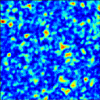
Some recent research arising from our project investigating the application of speckle velocimetry (SV) project for Mars rovers and other autonomous vehicles (EPSRC grant – EP/H019839/1) has been accepted for publication.
During the course of the SV work it became apparent that the observed speckle shift was very dependent upon the surface shape beneath the vehicle (a factor over which we have no control!) and that an extended theory of the speckle displacement was necessary to understand how best to minimise any errors introduced to the velocity measurements. What followed can only be described as maths – lots of maths – as we attempted to understand the original theory and how to modify it to include the influence of surface shape. Finally after many reams of scrap paper (mostly the lunchtime crosswords), and several iterations of an experiment designed to measure the speckle translation scaling factors with sufficient accuracy – we had a working theory – but only for when the detector is perpendicular to the surface. After a bit of head scratching we released what was wrong – the original theory [ref] also broke down for off-axis detector positions, so by removing some approximations we finally arrived at a working theory validated for both on-axis and off-axis detector positions.
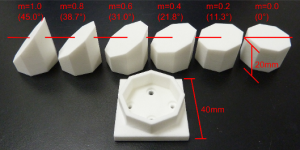
This paper also presents an interesting practical example of how new 3D printing technology can help in research. For the experimental validation of the new speckle shift theory we needed some very accurate test surfaces, a series of ramps with different gradients and an octagonal cross-section. This allowed not only the magnitude of the gradient to be varied but also the direction by rotating the ramp in in 45o increments to vary both components of the surface gradient in a controlled manner. Having our technician make up these parts would have been time consuming and costly, so we had the parts 3D printed. This was done by external company using a Selective Laser Sintering process to create Nylon parts with a precision of ±0.1mm. The finished ramps have a surface texture like an extra-strong mint that is ideal for laser speckle generation and cost the princely sum of £6.20 per ramp!
Update: The full paper is available now from Optics Express (http://www.opticsinfobase.org/oe/abstract.cfm?uri=oe-22-21-25466):
http://www.opticsinfobase.org/oe/abstract.cfm?uri=oe-22-21-25466/
Objective speckle displacement: an extended theory for the small deformation of shaped objects
T O H Charrett and R P Tatam
Optics Express, Vol. 22, Issue 21, pp. 25466-25480 (2014)
Or via CERES https://dspace.lib.cranfield.ac.uk/ (Cranfield University institutional repository).
Publication update – Flow measurement
22nd July 2014
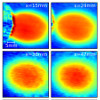
We have recently presented some of our work in the area of flow measurement at the 17th International symposium on application of laser techniques to fluid mechanics in Lisbon. (http://ltces.dem.ist.utl.pt/lxlaser/lxlaser2014/index.asp) .
In the paper “Frequency-division multiplexing (FDM) for interferometric referencing and multi- component measurements in Planar Doppler Velocimetry (PDV)” (http://ltces.dem.ist.utl.pt/lxlaser/lxlaser2014/finalworks2014/papers/01.2_2_78paper.pdf) we explore the applications of high speed industrial cameras for full-field interferometry and the multiplexing of velocity channels via frequency division multiplexing. A high speed CMOS camera is used to acquire image banks of multiple amplitude modulated signals acquired simultaneously which can then be separated in post-processing. This was applied to an interferometric Doppler Global velocimetry (DGV) allowing the measurement of flow velocity over a plane defined by a laser formed into a light sheet. The application of this technique enables the much easier implementation of multiple-component interferometric DGV systems and overcomes practical issues with interferometric drift and stability.
Update: Full Journal paper – this work has now been published in a more complete form, as a peer-reviewed journal article in Applied Optics:
Frequency-division multiplexing for Interferometric Planar Doppler Velocimetry
T O H Charrett, I A Bledowski, S W. James and R P Tatam
Applied Optics (2014) Applied Optics, Vol. 53, Issue 20, pp. 4363-4374 (2014) (http://dx.doi.org/10.1364/AO.53.004363)
CamFOS 2014
30th June to 1st July 2014
Inaugural Cambridge conference on fibre optic sensing in civil infrastructure 30 June to 1 July 2014
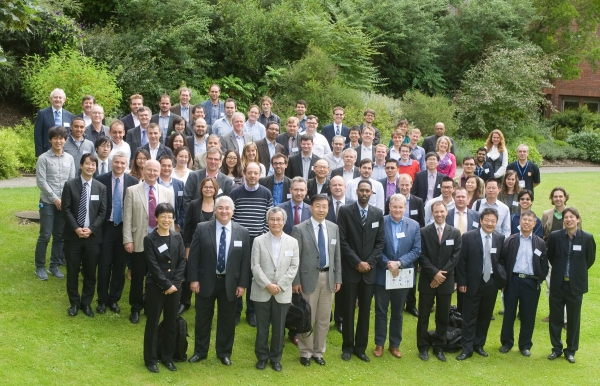
Invited presentations
- Geotechnical and Civil Infrastructure Applications of fibre Bragg grating sensors
R P Tatam
Presented at the Cambridge Conference on Fibre Optic Sensing in Civil Infrastructure, Cambridge, UK, June 2014.
Visit by President of the SPIE
June
Dr Phil Stahl (left), who works for NASA as the optical metrology lead for optical components on the James Webb telescope, visits EP in his capacity as President of SPIE.

